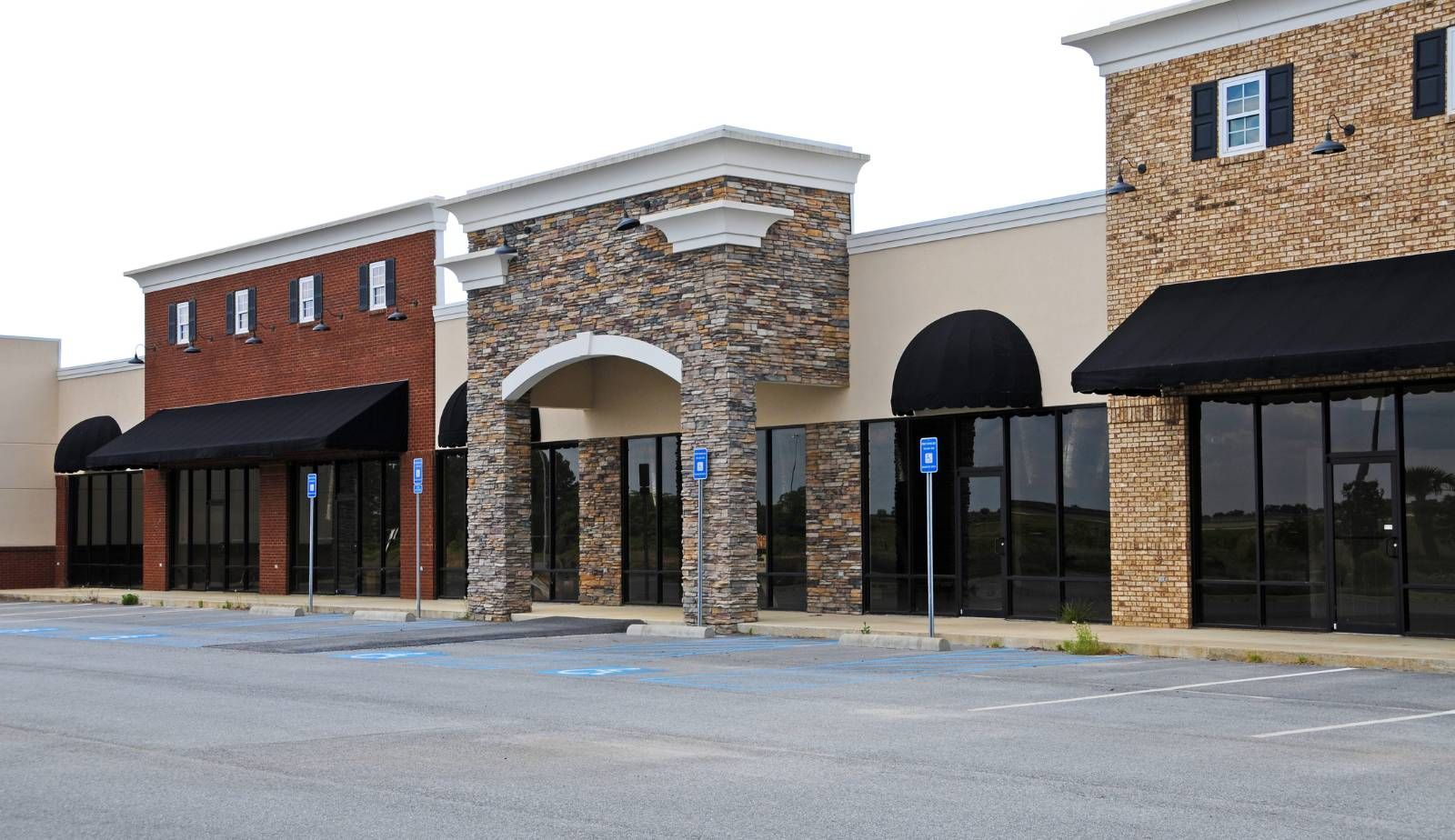Emergency Planning for Small Businesses: Fire and Water Damage Protocols
Small businesses are the backbone of the economy, with millions of entrepreneurs running their own companies.
However, many small businesses are unprepared for emergencies, such as fire and water damage, that can cause significant damage to their operations. In this article, we will guide small business owners through creating and implementing effective emergency plans that address potential fire and water damage, ensuring business continuity.
Fire and water damage are two of the most common emergencies that can impact small businesses. A fire can quickly destroy a commercial property, while water damage from a burst pipe or flood can damage inventory, equipment, and documents. Without proper planning, small businesses may struggle to recover from these emergencies, leading to financial losses and potential closure. In this article, we will provide small business owners with the tools they need to develop emergency plans that will help them prepare for and respond to fire and water damage.
Understanding the Risks
Small business owners must be aware of the potential risks and hazards that their business may face. By understanding the risks, they can create effective emergency plans that address potential fire and water damage, ensuring business continuity.
Identifying Potential Hazards
The first step in understanding the risks is to identify potential hazards. Hazards that small businesses may face include floods, fires, earthquakes, tornadoes, hurricanes, and wildfires. Small business owners should assess their business location and identify the potential hazards that could impact their business. For example, businesses located in areas prone to flooding should have a plan in place to address potential flood damage.
Conducting Risk Assessment
After identifying potential hazards, small business owners should conduct a risk assessment. This involves evaluating the likelihood and potential impact of each hazard. For example, a small business located in an area prone to wildfires should evaluate the likelihood of a wildfire occurring and the potential impact it could have on their business.
Small business owners should also identify the critical functions of their business that could be impacted by a disaster. This includes identifying key personnel, equipment, and data that are essential for business continuity. By conducting a risk assessment, small business owners can prioritize their emergency planning efforts and ensure that they are prepared for potential disasters.
Understanding the risks is a critical step in creating effective emergency plans for small businesses. By identifying potential hazards and conducting a risk assessment, small business owners can ensure that they are prepared for potential fire and water damage, ensuring business continuity.

Developing the Emergency Plan
Creating an emergency plan is a crucial step in ensuring the safety of employees and minimizing damage to property in the event of a disaster. Small businesses should develop a comprehensive emergency plan that addresses potential fire and water damage scenarios. The following subsections will provide guidance on creating evacuation procedures, establishing shelter-in-place protocols, and designing lockdown procedures.
Creating Evacuation Procedures
Evacuation procedures should be developed to ensure the safe and orderly evacuation of all employees and customers in the event of an emergency. The evacuation plan should include clear instructions on how to exit the building and where to assemble outside. It should also designate a person responsible for ensuring that everyone has evacuated the building and accounted for.
Small businesses should conduct regular drills to ensure that employees are familiar with the evacuation procedures and can evacuate quickly and safely. The drills should be conducted during different times of the day to simulate different scenarios.
Establishing Shelter-in-Place Protocols
Shelter-in-place protocols should be developed to provide employees and customers with a safe location within the building in the event of a disaster. The shelter-in-place location should be designated in the emergency plan and should be equipped with emergency supplies such as water, first aid kits, and flashlights.
Small businesses should conduct regular drills to ensure that employees are familiar with the shelter-in-place protocols and can quickly and safely move to the designated location. The drills should be conducted during different times of the day to simulate different scenarios.
Designing Lockdown Procedures
Lockdown procedures should be developed to secure the building and protect employees in the event of an active shooter or other dangerous situation. The lockdown plan should include clear instructions on how to secure the building, where to go, and how to communicate with law enforcement.
Small businesses should conduct regular drills to ensure that employees are familiar with the lockdown procedures and can quickly and safely secure the building. The drills should be conducted during different times of the day to simulate different scenarios.
Developing an emergency plan is a critical step in ensuring the safety of employees and minimizing damage to property in the event of a disaster. Small businesses should create a comprehensive emergency plan that includes evacuation procedures, shelter-in-place protocols, and lockdown procedures. Regular drills should be conducted to ensure that employees are familiar with the procedures and can respond quickly and safely in the event of an emergency.
Protecting Assets and Operations
Small businesses need to have a plan in place to protect their assets and operations in the event of an emergency. This section will cover three key areas: inventory management, safeguarding equipment and machinery, and securing real estate and personal property.
Inventory Management
Inventory management is an essential part of protecting a business's assets. Small businesses should have an accurate inventory of all their products and supplies. This inventory should be kept up-to-date and stored in a secure location. In the event of an emergency, having an accurate inventory will help business owners determine what has been lost or damaged, and what needs to be replaced.
Small businesses can use a variety of tools to manage their inventory, including spreadsheets, inventory management software, or barcode scanners. Regardless of the tool used, it is important to regularly update the inventory and keep it stored in a secure location.

Safeguarding Equipment and Machinery
Equipment and machinery are critical to many small businesses. To protect these assets, small business owners should take steps to safeguard them from potential damage. This includes regularly inspecting equipment and machinery to ensure they are in good working condition, and storing them in a secure location when not in use.
Small businesses should also have a plan in place to protect equipment and machinery in the event of an emergency. This may include moving equipment to a safe location, covering it with protective materials, or shutting it down to prevent further damage.
Securing Real Estate and Personal Property
Small businesses should take steps to secure their real estate and personal property from potential damage. This includes installing fire alarms, sprinkler systems, and security cameras to monitor the premises. Business owners should also take steps to secure doors and windows to prevent break-ins.
In the event of an emergency, small business owners should have a plan in place to protect their real estate and personal property. This may include evacuating the premises, securing doors and windows, or moving valuable items to a safe location.
Communication and Training
Effective communication is essential for a small business to respond promptly, accurately, and confidently during an emergency. A crisis communication plan is an important component of a business's preparedness program. The plan should identify key personnel who will be responsible for communicating with employees, customers, suppliers, and other stakeholders during an emergency.
Developing a Crisis Communication Plan
Developing a crisis communication plan involves identifying potential emergency scenarios and determining how the business will respond to each scenario. The plan should include procedures for notifying employees, customers, and suppliers of the emergency and providing them with updates as the situation unfolds. It should also identify the channels of communication that will be used, such as email, text messaging, social media, and phone calls.
The plan should be regularly reviewed and updated to ensure that it remains relevant and effective. It should also be tested through exercises and drills to identify any weaknesses and improve the response to an actual emergency.
Training Employees and Conducting Drills
Training employees on emergency procedures is critical to ensuring that everyone knows how to respond in an emergency. Employees should be trained on how to evacuate the building, where to assemble, and how to contact emergency services. They should also be trained on how to use fire extinguishers and other emergency equipment.
Regular drills should be conducted to test the effectiveness of the emergency procedures and identify any areas for improvement. The drills should be conducted at different times of the day and under different scenarios to ensure that employees are prepared for any emergency situation.
Effective communication and training are essential for small businesses to prepare for and respond to emergencies. By developing a crisis communication plan and training employees, small businesses can ensure business continuity and protect the safety of their employees and customers.
Insurance and Financial Preparedness
Small business owners should consider insurance and financial preparedness as part of their emergency planning. This includes understanding insurance coverage and exploring government and SBA loans.
Understanding Insurance Coverage
Insurance coverage can provide financial protection for a business in the event of a disaster. Small business owners should review their insurance policies to ensure they have adequate coverage for potential fire and water damage. This includes property insurance, liability insurance, and business interruption insurance.
Property insurance can cover damage to a building and its contents caused by fire, water, or other disasters. Liability insurance can cover legal fees and damages if someone is injured on the business premises. Business interruption insurance can cover lost income and expenses if the business is unable to operate due to a disaster.
It is important to review insurance policies regularly and make updates as needed. Small business owners should also keep copies of important documents, such as insurance policies and financial records, in a secure location off-site.
Exploring Government and SBA Loans
In addition to insurance coverage, small business owners may be eligible for government and SBA loans to help with recovery after a disaster. The Federal Emergency Management Agency (FEMA) and Small Business Administration (SBA) offer a variety of disaster assistance programs.
Home and property disaster loans can help homeowners and businesses repair or replace property damaged by a disaster. Economic injury loans can provide working capital to help small businesses meet financial obligations while recovering from a disaster.
Small business owners should explore all options for disaster assistance and apply for loans as soon as possible. It is important to keep detailed records of all expenses related to the disaster and to provide documentation to support loan applications.

Emergency Support and Resources
Small business owners should consider leveraging public emergency services and utilizing federal and local resources to aid in emergency planning. This can include working with the Federal Emergency Management Agency (FEMA) and the American Red Cross Ready Rating program.
Leveraging Public Emergency Services
Public emergency services, such as local fire and police departments, can provide valuable support to small businesses during emergencies. Small business owners should consider reaching out to these services to establish relationships and discuss potential emergency scenarios. Public emergency services can also provide training and education on emergency preparedness and response.
Utilizing Federal and Local Resources
Small business owners can utilize federal and local resources to aid in emergency planning and response. The Federal Emergency Management Agency (FEMA) provides resources such as emergency planning guides and training programs. The American Red Cross Ready Rating program provides a free assessment tool to help businesses evaluate their preparedness level and identify areas for improvement.
Government resources, such as the Small Business Administration (SBA), can also provide assistance to small businesses during emergencies. The SBA provides disaster recovery loans to small businesses affected by disasters.
In addition, the American Red Cross provides resources such as emergency response checklists and training programs. Small business owners can also consider becoming a Ready Rating member to receive additional resources and support.
Overall, small business owners should consider leveraging public emergency services and utilizing federal and local resources to aid in emergency planning and response. By establishing relationships with public emergency services and utilizing available resources, small businesses can better prepare for and respond to emergencies.
Recovery and Business Continuity
Small businesses need to be prepared for the worst-case scenario when it comes to fire and water damage. Creating a disaster recovery plan and establishing business continuity strategies are essential to ensure that the business can recover quickly and continue to operate after a disaster.
Creating a Disaster Recovery Plan
A disaster recovery plan outlines the procedures and processes that a small business needs to follow to recover from a disaster. It includes the steps that need to be taken to restore critical systems and applications, data recovery, and communication protocols.
To create a disaster recovery plan, a business should conduct a business impact analysis (BIA) to identify potential risks and the impact they may have on the company's operations. The BIA should identify the critical systems and applications that need to be restored first, the recovery time objectives (RTOs), and the performance objectives for each system.
Once the BIA is complete, the business can develop a disaster recovery plan that outlines the procedures to be followed during and after a disaster. The plan should include a list of emergency contacts, backup and recovery strategies, communication protocols, and procedures to restore critical systems and applications.
Establishing Business Continuity Strategies
Business continuity planning goes beyond disaster recovery planning. It involves developing strategies to ensure that the company can continue to operate during and after a disaster.
To establish business continuity strategies, a small business should identify its critical business functions and the resources needed to support them. The business should also develop strategies to minimize the impact of a disaster on its operations, such as establishing alternate work locations, backup power sources, and communication protocols.
A resilient business is one that can quickly adapt to changing circumstances and continue to operate during and after a disaster. To achieve this, a small business should establish performance objectives that reflect its ability to operate during a disaster.
In conclusion, disaster recovery and business continuity planning are essential for small businesses to ensure that they can recover quickly and continue to operate after a disaster. By creating a disaster recovery plan and establishing business continuity strategies, small businesses can minimize the impact of a disaster on their operations and become more resilient.
Frequently Asked Questions
What are the essential components of a fire and water damage emergency plan for small businesses?
The essential components of a fire and water damage emergency plan for small businesses include identifying potential hazards, creating an evacuation plan, establishing communication protocols, and designating roles and responsibilities for employees. Small businesses should also consider developing a continuity plan to ensure that operations can resume as quickly as possible after an emergency.
How can a small business create an emergency response plan that complies with FEMA guidelines?
Small businesses can create an emergency response plan that complies with FEMA guidelines by following the agency's recommended best practices. FEMA recommends that small businesses conduct a risk assessment, identify critical business functions, and develop a continuity plan. Small businesses should also establish communication protocols, designate roles and responsibilities, and train employees on emergency response procedures.
What steps should a small business take to ensure continuity of operations after a fire or water emergency?
To ensure continuity of operations after a fire or water emergency, small businesses should have a continuity plan in place that identifies critical business functions, establishes backup systems and procedures, and designates alternate work locations if necessary. Small businesses should also consider working with vendors and suppliers to ensure that they can continue to provide essential goods and services after an emergency.
What are the best practices for training employees on emergency response procedures for fire and water damage?
The best practices for training employees on emergency response procedures for fire and water damage include conducting regular drills and exercises, providing clear and concise instructions, and designating roles and responsibilities for employees. Small businesses should also consider providing training on basic first aid and CPR to employees.
How often should a small business review and update its emergency preparedness plan?
Small businesses should review and update their emergency preparedness plan at least once a year, or whenever significant changes occur in the business or its environment. Small businesses should also conduct regular drills and exercises to test the effectiveness of their emergency preparedness plan and identify areas for improvement.
What resources are available to help small businesses develop an emergency response plan for fire and water damage?
Small businesses can access a variety of resources to help them develop an emergency response plan for fire and water damage. The Federal Emergency Management Agency (FEMA) offers a variety of guides and resources for small businesses, including the "Emergency Management Guide for Business and Industry." Small businesses can also consult with local fire departments and emergency management agencies for guidance and support.
You might also like
DryMax Restoration Blogs




